New Orleans VAR Helps In Haiti
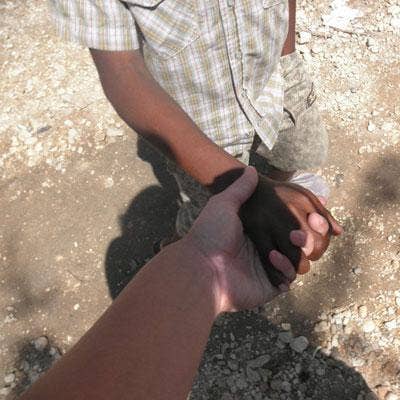
Helping Hands
Vince Gremillion, president of Restech Information Services, a Jefferson, La.-based solution provider, saw first-hand the catastrophic damage that Mother Nature could cause when he lived through Hurricane Katrina in 2005. And even though neither he nor his company were dramatically impacted by that storm, he also saw first-hand how much a helping hand can mean to a community. Five years later, Gremillion seized an opportunity to help out another community recovering from a major natural disaster.
For 10 days in July Gremillion, with his daughter and son, were part of a large relief effort in Haiti, which is still struggling to recover after getting rocked by an earthquake in January. Here are some images Gremillion captured from the trip. In this picture, a member of the mission holds hands with a young Haitian boy.
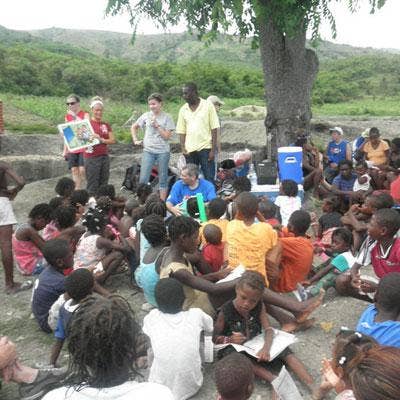
Relief Mission
Gremillion, wearing a blue shirt and seated near the center, listens as other members of the mission speak near St. Mark, Haiti.
"Our church has a ladies organization that makes a mission trip a few times a year. I felt I wanted to go and have my older kids, 17 and 19, go with me," said Gremillion. "We went with 15 other people, with a couple of doctors. We were based two hours outside Port-au-Prince. We did food distribution, construction, skits in the streets. You name it."
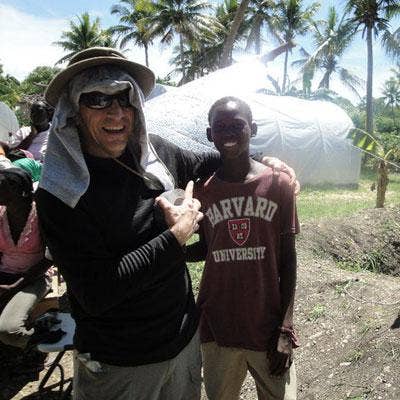
Top Of The Mountain
At the top of a mountain, Gremillion, left, enlisted the help of this boy to scrounge up material to construct a makeshift lean-to that provided shade for doctors who were giving people blood-pressure screenings.

Living Conditions
Refugees often live in makeshift tents surrounding an existing village. Here, temporary tents and semi-permanent tin houses surround permanent residents in a village called Parisse.
Haiti's infrastructure is slowly being rebuilt, but in some ways it's almost being built as new, which creates a juxtaposition of the past and the future, Gremillion said. While electricity is still not prevalent, or stable, it's not uncommon to see children with cell phones, he said. "They look like little kids with toy phones. A lot of them are residential handsets with a [cellular] radio built in," he said.
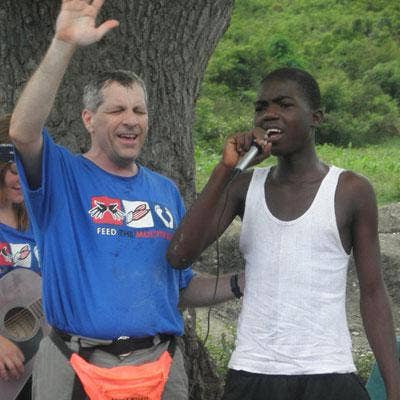
Music Men
Gremllion, left, helps a Haitian youth sing a religious song. He said many of the children wanted to grab the microphone to help sing songs.
IT equipment, or IT equipment that works more than sporadically, is in short supply, Gremillion said.
"There are libraries and schools that all advertise Internet connections but they don't work well. It's a a great [opportunity] for WiMax," he said. "It would help reduce the cost of not having to run lines. You could get netbook-type computers that are well-suited for WiMax deployments."
The missionary had about a half-dozen computers, but the connection was "worse than 56K modem speeds," Gremillion said. "Everybody was trying to upload pictures, but you have to be patient."
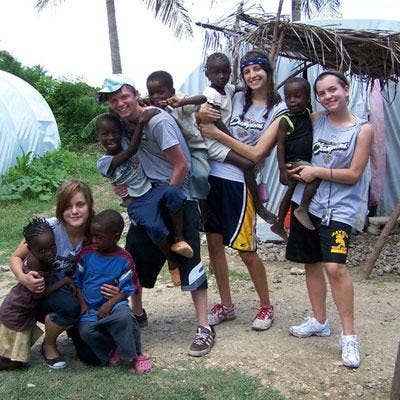
Finish Strong
Many of the relief workers wore T-shirts commemorating the New Orleans Saints Superbowl victory in February, including Gremillion's daughter Katie (in blue bandana).
The missionaries wore the shirts in order to try to get the local residents "to think like champions," Gremillion said. "We told them, 'You are the champions.' We explained our 'Finish Strong' bracelets. It's about staying the course, not quitting, being part of the new Haiti. They all loved it," Gremillion said. "There was one guy who came in late that week and wanted a bracelet, but we said no. You have to do the work. You have to earn it. That lesson of work ethic is important."
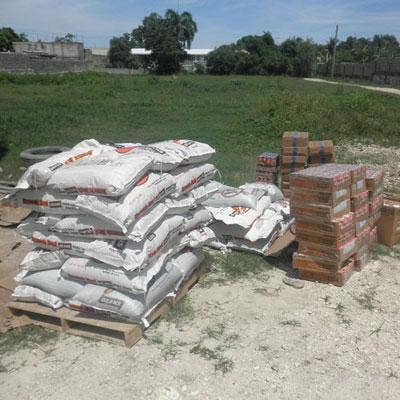
Food For Thought
Fifty-pound bags of black beans sit near boxes of noodles, cans of sauce and other food awaiting distribution. The food was unloaded from a truck because the truck was needed for another project.
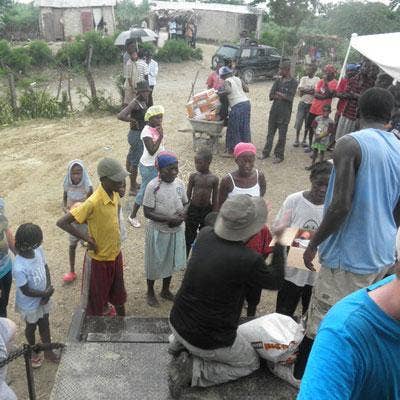
Supplies Delivered
Gremillion, in black shirt and gray hat, helps hand out supplies to local families.
"They still need help and anything you bring there is more than what they've got. They appreciate everything. Every rubber band is precious to them," he said.

Going Home
Two boys carry boxes of food back to their families, many of whom are living in white tents supplied by a company in Pennsylvania.
Gremillion said residents cannot stay permanently at the camp. The goal is to graduate them to make them self-sustainable. He said people have taken up permanent residence across the street, but the mission will not give them any food. "If you keep giving it to them, they will never become independent. They will never break free," he said.
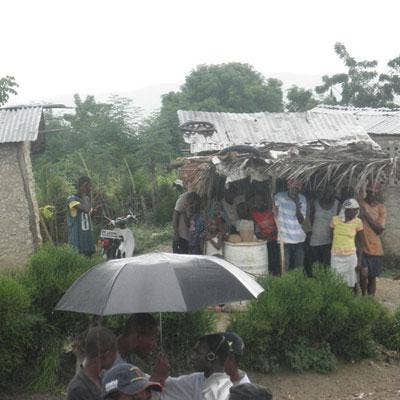
Weather Woes
The food distribution was temporarily hindered by a driving rain storm. Everyone takes shelter under whatever cover they can find, whether it's an umbrella or a tin roof.
One thing relief efforts can't do is try to replicate a U.S.-like culture in Haiti, Gremillion said. "Don't try to make them like the West. It doesn't work. We need to be passing on generational ideas of living off the land. There's nothing wrong with that. It brings stable families, good societal structures."
{C}
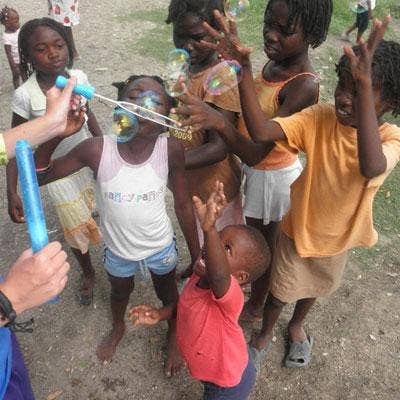
Happiness Found
A gift as simple as a bubble blower can go a long way to make a child happy.
"The biggest surprise to me was that all the kids are pretty happy. Outside Port-au-Prince, everybody was pretty happy. You just don't see sadness. People are getting by. If they can change their infrastructure ideas and cultural ideas, then they'll do well, once they learn how to take care of themselves. There's a lot of energy, creativity there. The music is great; if that breaks out [to international markets] it would be very helpful."
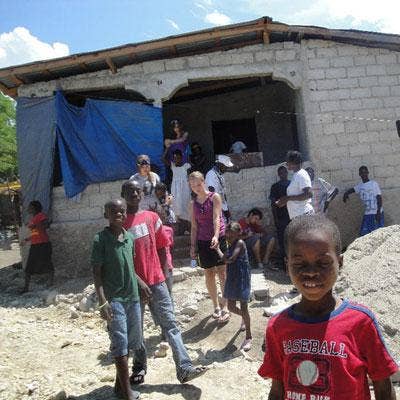
Concrete Examples
Construction is a big part of the relief efforts in Haiti. Part of the reason the earthquake caused so much damage is because houses and other buildings were so poorly constructed, Gremillion said.
This house now houses about 35 orphaned children, thanks to a family who took them in. Still, the house has a sheet metal roof and no insulation.
"In Haiti, they literally just water down the concrete. They hardly used rebar and if they did it was just vertical. There are no tie-ins horizontally," Gremillion said. "It's been years and years of people with just their immediate future in mind. It's just a culture there."
Gremillion said the mission seeks to break the cycle of poverty by teaching self-sustaining farming and other means of work.
"It's a great country. The land is beautiful. There's great harbors, fishing, plenty of food. It can well support a population," he said.
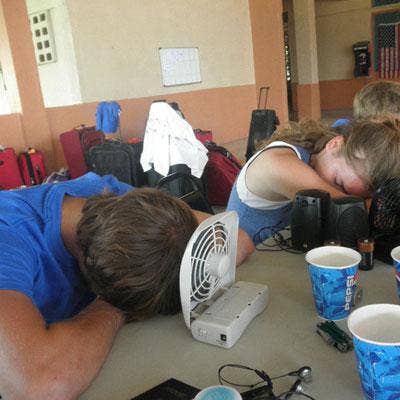
A Long Week
With their bags packed in the background, two missionaries, including Gremillion's son Michael, at left, take a quick nap at a table while portable fans try to keep them cool.
"I would have no qualms about going back to Haiti. I know my daughter would love to go back right away. A couple girls on the trip were really taken with [the people and the country]," he said.